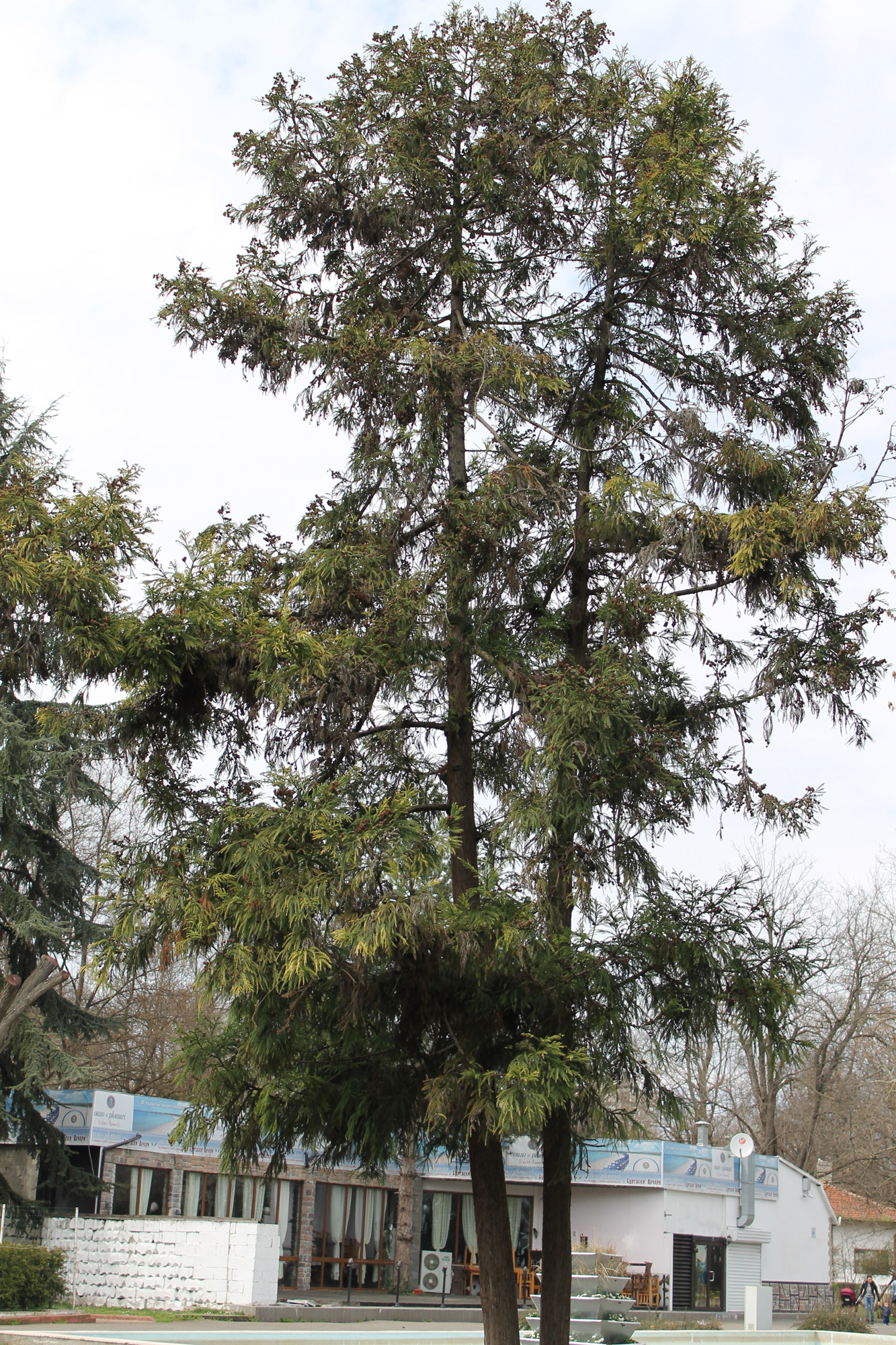Cryptomeria japonica
 Cryptomeria ( Cryptomeria japonica ) is a monotypic genus in the family Cupressaceae . In the past it was wrongly attributed to the family of cedars and was called "Japanese cedar."
Cryptomeria ( Cryptomeria japonica ) is a monotypic genus in the family Cupressaceae . In the past it was wrongly attributed to the family of cedars and was called "Japanese cedar."
Cryptomeria is an evergreen coniferous tree. The species is fast-growing, reaching a height of 8 to 10 meters for 10 years. The old trees in Japan are about 45 m high. Rarely Cryptomeria tree can reach a height of 60 m. The stem of the species may be with a diameter of 1-2 to 4 m. The crown has a conical shape at a young age and in older specimens it is wide with massive branches. The bark of the trunk is reddish brown and
streaked vertically. Its triangular needle-like leaves are dark green, 2.5 cm long, arranged spirally and can hold onto branches for 4-5 years.
Endemic to Japan, the Cryptomeria is one of the most remarkable trees in the country for various reasons. On the one hand it is the highest and widest tree in the wild of Japan, which is a close relative of the giant sequoia. On the other hand Cryptomeria has historical and spiritual significance to the country. It is a national tree of Japan, mainly planted around temples and shrines. The country has long existed beautiful alley, all planted with Cryptomeria trees, which length is 65 km.
The Japanese name is productive species Sugi. Plantations of Sugi (mainly grown for wood) can be seen in almost every mountain in Japan. Chinese version of Japanese kriptomeriya is called Cryptomeria japonica sinensis . This variety is grown in China for so long that many people think that Japanese kriptomeriya originates from there. In China, it is grown for timber and ornamental tree. In our Japanese kriptomeriya also is used as an ornamental tree because of the beautiful shape of the crown and its steady increase. Where appropriate environmental conditions, this wood species used in landscaping in many places in Eastern Europe and Asia.






